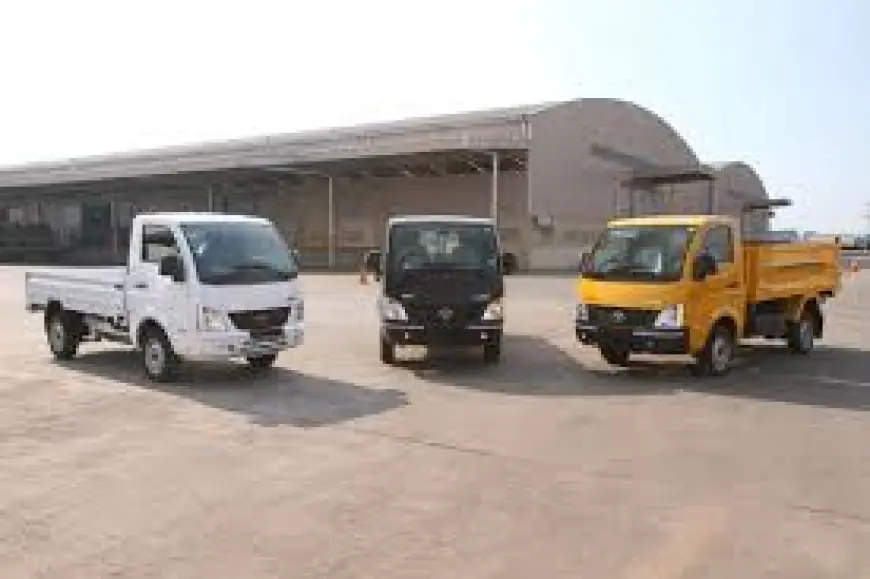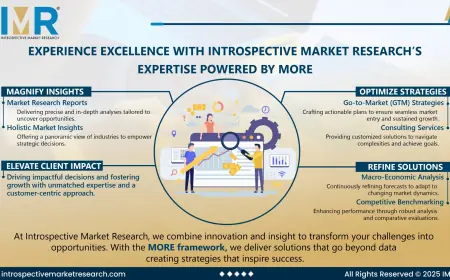Indonesia Commercial Vehicle Market 2030 Opportunities Ahead
Indonesia’s infrastructure growth fosters improved transportation efficiency, with better roads and logistics hubs enabling faster movement of goods.

Market Overview
The Indonesia commercial vehicle market is undergoing a phase of rapid expansion, transformation, and diversification. Valued at USD 29.32 billion in 2024, it is projected to grow to USD 46.02 billion by 2030, reflecting a robust CAGR of 7.80% during the forecast period. This growth is not merely numerical; it reflects the restructuring of logistics, mobility solutions, and industrial ecosystems in the archipelagic nation.
Indonesia’s unique geography, with thousands of islands connected through maritime and land routes, demands a specialized mix of commercial vehicles—from compact trucks for urban logistics to heavy-duty trucks supporting large-scale mining and infrastructure projects. The sector is no longer just about moving goods or passengers; it is a critical enabler of e-commerce expansion, regional connectivity, and national industrialization goals.
The rising adoption of electric commercial vehicles (EVs), the increased focus on safety and driver comfort, and the rise of fleet digitization technologies are among the forces shaping this industry. At the same time, new financing models, aftermarket services, and localized manufacturing strategies are making commercial vehicles more accessible and efficient for a wide range of businesses, from large corporations to small and medium enterprises.
Download Free Sample Report: https://www.techsciresearch.com/sample-report.aspx?cid=8116
Emerging Trends in the Indonesia Commercial Vehicle Market
1. Electrification of Commercial Fleets
Indonesia has emerged as a hotspot for electric commercial vehicles, thanks to favorable policies, the abundance of nickel (a core raw material for EV batteries), and the government’s commitment to decarbonization. The introduction of electric trucks and vans for last-mile deliveries is gaining traction in major cities such as Jakarta, Surabaya, and Bandung. Logistics operators see EVs as a way to reduce operational costs, hedge against fuel price volatility, and comply with stricter emission standards.
2. Digital and Connected Fleets
Fleet operators are increasingly integrating telematics and predictive maintenance solutions. Digital monitoring of driver performance, route optimization, and real-time diagnostics are becoming mainstream. These technologies not only enhance efficiency but also help operators minimize downtime and extend vehicle lifespans.
3. Growth of Aftermarket Services
With more vehicles on the road, the demand for aftermarket services, spare parts, and maintenance networks has surged. New players, including fintech-enabled platforms, are entering the space to provide bundled vehicle + maintenance + financing solutions, especially in tier-2 and tier-3 cities.
4. Shift Towards Ergonomic and Safer Vehicles
Commercial vehicle manufacturers are rethinking driver cabins. From ergonomic seating to automated safety features like lane-keeping assist, fatigue monitoring, and emergency braking, safety and comfort are becoming critical differentiators in purchasing decisions.
5. Regional Development Influences Demand
The planned relocation of Indonesia’s capital to East Kalimantan is creating strong demand for construction vehicles, heavy-duty trucks, and support fleets. Similarly, regions with mining and agriculture activity, such as Kalimantan and Sumatra, are driving demand for specialized transport vehicles.
Market Drivers
Rising E-Commerce and Last-Mile Delivery Needs
Indonesia’s booming e-commerce industry is one of the strongest drivers for small and mid-sized trucks and vans. With millions of daily transactions, demand for efficient last-mile delivery solutions has skyrocketed.
Infrastructure Development Initiatives
Government-backed projects such as toll road expansion, port modernization, and industrial corridor development are boosting demand for heavy-duty trucks, buses, and construction vehicles.
Supportive Policies for EV Adoption
Tax incentives, toll exemptions, and subsidies for electric vehicles are accelerating the adoption of electric commercial vehicles. Additionally, Indonesia’s position as a global leader in nickel resources is helping establish a strong EV battery ecosystem.
Financing Accessibility and Leasing Solutions
The rise of leasing services and fintech-powered lending platforms has eased vehicle acquisition. MSMEs, in particular, benefit from accessible financing that allows them to scale logistics fleets quickly.
Focus on Road Safety and Driver Welfare
With rising accident rates and congestion, safety technologies have become a necessity rather than a luxury. Features like driver assistance systems, advanced braking, and fatigue monitoring are driving adoption across both small fleets and large logistics firms.
Industry Key Highlights
- The market size is set to nearly double from USD 29.32 billion in 2024 to USD 46.02 billion by 2030.
- Electric vehicles are the fastest-growing propulsion segment, supported by policy incentives and charging infrastructure expansion.
- Passenger safety and driver comfort are influencing buying decisions more strongly than before.
- The Kalimantan region is the fastest-growing hub due to mining, agriculture, and the planned capital relocation.
- Fleet digitalization and telematics adoption are reshaping operational efficiency for logistics players.
- Strong aftermarket service growth is emerging, with bundled financing + maintenance models gaining traction.
Competitive Analysis
The Indonesia commercial vehicle market is moderately consolidated, with global and domestic players competing across multiple segments:
- Mitsubishi Motors Krama Yudha Indonesia – Dominant in trucks and light commercial vehicles with a strong dealer network.
- PT Astra Daihatsu Motor – A leader in compact commercial vehicles catering to MSMEs and urban logistics.
- PT HINO Indonesia – Strong in heavy-duty and mid-sized trucks, particularly in construction and mining sectors.
- Isuzu Astra Motor Indonesia – Recognized for reliable diesel-powered trucks, popular in intercity logistics.
- Suzuki Indonesia & Tata Motors Indonesia – Focused on affordable vans and small trucks, appealing to SMEs.
- PT Daimler Commercial Vehicles Indonesia – Targeting the premium heavy-duty truck segment.
- UD Trucks Corp & Renault Maxindo – Competing in long-haul and construction vehicle niches.
The competitive landscape is further intensifying as companies invest in local assembly plants, EV development, and fleet management solutions.
Future Outlook
The Indonesia commercial vehicle market is set for transformative growth by 2030. Several factors shape this outlook:
- Electrification Momentum – By 2030, a large share of urban logistics fleets is expected to be electric, supported by charging corridors and government subsidies.
- Smart Fleets – Predictive analytics, AI-driven telematics, and autonomous fleet trials will redefine efficiency and safety.
- Regional Growth Drivers – With East Kalimantan becoming the new capital, construction and logistics vehicle demand will surge.
- Sustainability Pressures – Carbon neutrality targets will force adoption of EVs, hybrids, and biofuel-compatible fleets.
- Urban Mobility Evolution – Smaller, more maneuverable commercial vehicles will dominate last-mile and intra-city logistics.
10 Benefits of the Research Report
- Detailed market size projections up to 2030 with CAGR insights.
- Comprehensive segmentation by propulsion, transmission, vehicle type, and region.
- Identification of emerging growth drivers and investment hotspots.
- Competitive benchmarking of major players with market share insights.
- Analysis of regulatory and policy impacts on commercial vehicle adoption.
- In-depth study of EV adoption and charging infrastructure growth.
- Regional analysis highlighting growth hubs like Kalimantan and Java.
- Strategic recommendations for OEMs, fleet operators, and policymakers.
- Insight into consumer preferences, fleet digitization, and aftermarket services.
- Customized options for specific business needs and decision-making support.
Conclusion
The Indonesia commercial vehicle market is evolving into a strategic engine for national growth, bridging trade gaps, powering industrial development, and reshaping logistics ecosystems. With a balance of challenges—like road infrastructure limitations and cost pressures—and opportunities—like electrification, digitalization, and regulatory reforms—the market is positioned for robust expansion.
By 2030, Indonesia will not just witness higher vehicle volumes but will also transition towards smarter, safer, and greener fleets that align with its economic and environmental ambitions. For manufacturers, fleet operators, and investors, this market represents both a challenge and an unprecedented opportunity.
Contact Us-
Mr. Ken Mathews
708 Third Avenue,
Manhattan, NY,
New York – 10017
Tel: +1-646-360-1656
Email: [email protected]
Website: www.techsciresearch.com
What's Your Reaction?
 Like
0
Like
0
 Dislike
0
Dislike
0
 Love
0
Love
0
 Funny
0
Funny
0
 Angry
0
Angry
0
 Sad
0
Sad
0
 Wow
0
Wow
0


























































